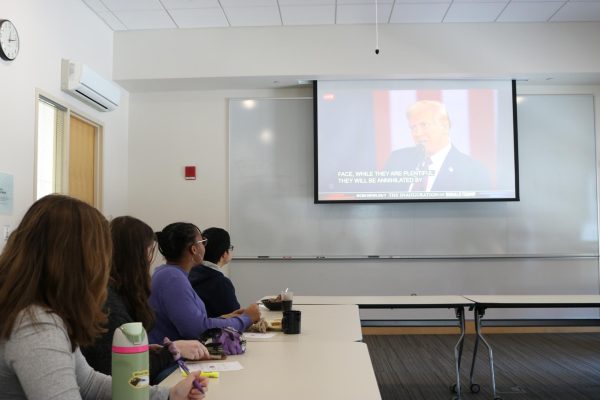What Will COVID Mean for Graduation Rates?
With COVID-19 radically altering the state of higher education as we know it, graduation and retention rates at colleges and universities have become the subject of greater inquiry. Some colleges’ graduation rates have already decreased in the midst of COVID, and this trend is expected by many to continue throughout the course of the pandemic.

The Bates Student spoke with Tom McGuinness, Director of Institutional Research, Analysis, and Planning to gain further insight into recent graduation rates and what they mean for the school.
According to McGuinness, graduation rates can be best explained as a math problem: the number of students graduating as part of a class year or grade divided by the number of students who started out in that class year or grade. Colleges most often use intervals of four to six year graduation rates (beginning from the time the cohort started school) to measure these statistics.
Graduation rates are an important metric for school rankings as well as athletic and accreditation reporting.
“Using Bates as an example,” started McGuinness, “500 students started as first-time, first-year students in fall 2013 and 454 of them graduated by Aug. 31, 2019, giving Bates a six-year graduation rate of 90.8%. Since Congress passed the Student Right-to-Know and Campus Security Act in 1990, all institutions receiving Title IV funding are required to calculate graduation rates, report them to the federal government, and make them publicly available to all students and prospective students.”
In general, recent trends for graduation rates at Bates have been good news. According to the Graduation and Retention Dashboard, recent graduation rates have been on a generally positive trend, the most recently available six-year rate being 91%.
When asked about what kind of factors may influence graduation rates, McGuinness posed a better question: “What are the factors that influence whether a student graduates or not? There is a massive body of literature that answers this question and there are many factors that are correlated with the outcome of graduation.”
Academic, financial, and social factors such as college preparation and academic success in freshman year, financial aid, and individual experiences adjusting to college life all contribute to variation in graduation rates.
“This is a good time to mention,” McGuinness stated, “that much of the success the college has with high graduation rates should be attributed to Bates students and faculty. Bates enrolls students that are bright and motivated and the faculty are excellent, dedicated teachers. That is such a big part of whether students graduate.”
It appears, then, that graduation rates may be better attributed to individual students’ personal contexts, rather than institutional measures. Still, programs like BatesReach and BobcatsFirst!, as well as student support advisors, are implemented as a means of supporting students throughout the entirety of their college career.
Like virtually all facets of higher education in the midst of the pandemic, however, the future of higher education at Bates lies in flux.
When asked whether or not he believed COVID-19 would impact graduation rates, McGuinness replied: “I’ll be noncommittal and say, “Definitely maybe.” What we are experiencing now is truly unprecedented, so it is difficult to use the past to project what is going to happen in the future.”
As the number of students taking leaves from Bates has increased, many students’ expected graduation dates have been pushed back, thus affecting the graduation rate. Graduation rates serve an important purpose in bolstering a college’s reputation through accreditation and school ranking lists, thus the institutional future of the college will no doubt be implicated by these decisions.
Your donation will support the student journalists of Bates College and help us cover our annual website hosting costs.






